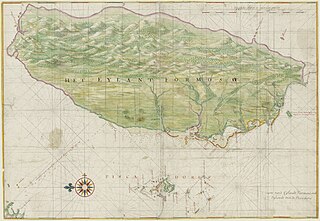 W
WThe history of the island of Taiwan dates back tens of thousands of years to the earliest known evidence of human habitation. The sudden appearance of a culture based on agriculture around 3000 BC is believed to reflect the arrival of the ancestors of today's Taiwanese indigenous peoples. The island was colonized by the Dutch in the 17th century, followed by an influx of Hoklo people including Hakka immigrants from the Fujian and Guangdong areas of mainland China, across the Taiwan Strait. The Spanish built a settlement in the north for a brief period but were driven out by the Dutch in 1642.
 W
WAgriculture is one of the main industries in Taiwan. It contributes to the food security, rural development and conservation of Taiwan. Around 24% of Taiwan's land is used for farming.
 W
WBalangay, also spelled barangay, is a type of lashed-lug boat built by joining planks edge-to-edge using pins, dowels, and fiber lashings. They are found throughout the Philippines and were used largely as trading ships up until the colonial era. The oldest known balangay are the Butuan boats, which have been carbon-dated to 320 AD and were recovered from several sites in Butuan, Agusan del Norte.
 W
WChen Jitong, courtesy name Jingru (敬如), also known as Tcheng Ki-tong, was a Chinese diplomat, general, scholar, and shipbuilder during the late Qing Dynasty. Chen was born in Houguan, now in present-day Minhou, Fuzhou. In 1869 he started to study the French language at the school attached to the Fuzhou shipyard. In 1875 Shen Baozhen sent thirty Chinese students, from the training school attached to the Foochow Arsenal to study shipbuilding and navigation in Europe. In 1876, Chen Jitong was selected to go to Europe and he wrote a book on his impressions after his return to China the following year. He subsequently served on a number of important positions in the Qing foreign service. While serving as a diplomat in France, he wrote several famous works in French, becoming the first Francophone Chinese author.
 W
WChianan Irrigation, also known as the Kanan Irrigation System, was built support agricultural production in the Chianan Plain of Taiwan. The name "chia-nan" was derived from two place names among its surrounding area called Chiayi and Tainan. Although it includes some other facilities, such as the Wusanto Reservoir, the term "Chianan Canal", in a narrow sense, would only mean the canals of this system.
 W
WCihou Fort or Cihou Battery is a historic fort in Cijin District, Kaohsiung, Taiwan, formerly guarding northern entrance to Kaohsiung Harbor.
 W
WThe cultural history of Taiwan can be traced back to prehistoric Stone Age. Later the development of written languages made it easier to maintain traditions of the Taiwanese culture.
 W
WJames Wheeler Davidson was an explorer, writer, United States diplomat, businessman and philanthropist. He is remembered for The Island of Formosa, Past and Present (1903) on the history of Taiwan and also noted for greatly aiding the internationalisation of Rotary International.
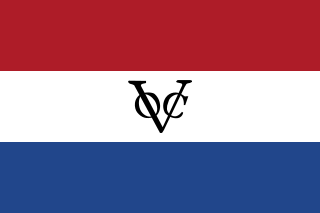 W
WThe island of Taiwan, also commonly known as Formosa, was partly under colonial rule by the Dutch Republic from 1624 to 1662. In the context of the Age of Discovery, the Dutch East India Company established its presence on Formosa to trade with the Ming Empire in China and Tokugawa shogunate in Japan, and also to interdict Portuguese and Spanish trade and colonial activities in East Asia.
 W
WFormosa Betrayed is a 1965 book written by George H. Kerr, a US diplomatic officer in Taiwan, who witnessed the February 28 Incident, and the corruption and killings committed by the Kuomintang in Taiwan after World War II.
 W
WAs a result of the surrender of Japan at the end of World War II, the island of Taiwan was placed under the governance of the Republic of China (ROC), ruled by the Kuomintang (KMT), on 25 October 1945. Following the February 28 massacre in 1947, martial law was declared in 1949 by the Governor of Taiwan Province, Chen Cheng, and the ROC Ministry of National Defense. Following the end of the Chinese Civil War in 1949, the ROC government retreated from the mainland as the Communists proclaimed the establishment of the People's Republic of China. The KMT retreated to Taiwan and declared Taipei the temporary capital of the ROC. For many years, the ROC and PRC each continued to claim in the diplomatic arena to be the sole legitimate government of "China". In 1971, the United Nations expelled the ROC and replaced it with the PRC.
 W
WThe History of the Republic of China begins after the Qing dynasty in 1912, when the formation of the Republic of China as a constitutional republic put an end to 2,000 years of imperial rule. The Manchu-led Qing dynasty ruled China proper from 1644 to 1912. The Republic experienced many trials and tribulations after its founding which included being dominated by elements as disparate as warlord generals and foreign powers.
 W
WThe Japanese invasion of Taiwan was a conflict between the Empire of Japan and the armed forces of the short-lived Republic of Formosa following the Qing Dynasty's cession of Taiwan to Japan in April 1895 at the end of the First Sino-Japanese War. The Japanese sought to take control of their new possession, while the Republican forces fought to resist Japanese occupation. The Japanese landed near Keelung on the northern coast of Taiwan on 29 May 1895, and in a five-month campaign swept southwards to Tainan. Although their advance was slowed by guerrilla activity, the Japanese defeated the Formosan forces whenever they attempted to make a stand. The Japanese victory at Baguashan on 27 August, the largest battle ever fought on Taiwanese soil, doomed the Formosan resistance to an early defeat. The fall of Tainan on 21 October ended organised resistance to Japanese occupation, and inaugurated five decades of Japanese rule in Taiwan.
 W
WThe Kingdom of Tungning or Kingdom of Formosa was a government that ruled part of southwestern Formosa (Taiwan) between 1661 and 1683. It was founded by Koxinga as part of the loyalist movement to restore the Ming dynasty in China after it was overthrown by the Manchu-led Qing dynasty. Koxinga hoped to recapture the Chinese mainland from the Qing, using the island as a base of operations. Until its annexation by the Qing Dynasty in 1683, the Kingdom was ruled by Koxinga's heirs, the House of Koxinga.
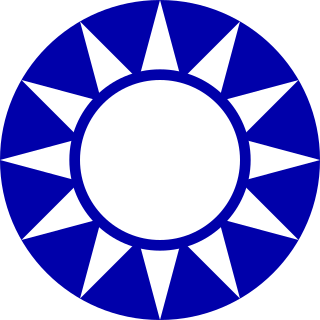 W
WThe Kuomintang (KMT), often referred to in English as the Nationalist Party of China or Chinese Nationalist Party (CNP), is a major political party in Taiwan, based in the city of Taipei. Formed in 1919, the KMT was the sole ruling party of the Republic of China from 1928 to 2000 under the Dang Guo system, and is currently an opposition political party in the Legislative Yuan. The Kuomintang is one of the two historical contemporary parties in China, the other being the Chinese Communist Party (CCP).
 W
WThe 1987 Lieyu massacre, also known as the March 7 Incident, Donggang Incident or Donggang Massacre, occurred on 7 March 1987 at Donggang Bay, Lieyu Island, Kinmen, Fujian, Republic of China. According to the diary of Superior-general Hau Pei-tsun, nineteen unarmed Vietnamese boat people were killed by the ROC military. There may have been more than nineteen deaths.
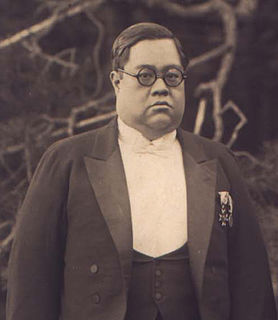 W
WThe Lin Ben Yuan Family, also known as the Banqiao Lin Family (板橋林家), are a Taiwanese family of businesspeople, politicians, and scholars. They rose from Banqiao, Taipei during the era of the Qing dynasty and are still active in present Taiwan.
 W
WLin Wang was an Indian elephant that served with the Chinese Expeditionary Force during the Second Sino-Japanese War (1937–1945) and later relocated to Taiwan with the Kuomintang forces. Lin Wang lived out most of his life in the Taipei Zoo and unquestionably was the most popular and famous animal in Taiwan. Many adults and children alike affectionately called the bull elephant "Grandpa Lin Wang."
 W
WThis list of archaeological sites in Taiwan encompasses sites that have either contributed substantially or have the potential to contribute substantially to research regarding people who have lived in Taiwan since prehistoric times. A historical site is not necessarily an archaeological site. A historical site should be included only if actual field work has been conducted at the site.
 W
WThis is a list of the highest-ranked rulers based on the island of Taiwan.
 W
WThe Manchu people in Taiwan constitute a small minority of the population of Taiwan.
 W
WJames Laidlaw Maxwell Senior was the first Presbyterian missionary to Formosa. He served with the English Presbyterian Mission.
 W
WThe Kingdom of Middag was a supra-tribal alliance located in the central western plains of Taiwan in the 17th century. This polity was established by the Taiwanese aboriginal peoples of Papora, Babuza, Pazeh and Hoanya. It ruled as many as 27 villages, occupying the western part of present-day Taichung county and the northern part of modern Changhua county. Having survived the rule of European colonists and the Kingdom of Tungning, the aboriginal peoples who previously comprised Middag were eventually subjugated to the rule of the Qing Empire in the 18th century.
 W
WA military dependents' village is a community in Taiwan built in the late 1940s and the 1950s whose original purpose was to serve as provisional housing for soldiers, sailors, airmen and marines of the Republic of China Armed Forces, along with their dependents from mainland China after the Government of the Republic of China (ROC) and the Kuomintang (KMT) retreated to Taiwan in 1949. They ended up becoming permanent settlements, forming distinct cultures as enclaves of mainlanders in Taiwanese cities. Over the years, many military dependents' villages have suffered from urban problems such as housing dereliction, abandonment, urban decay, and urban slum.
 W
WMining has been practiced in Taiwan for hundreds of years. Sulfur was an early important resource collected on the island. Coal mining expanded in the 19th century to keep up with demand from increased foreign trade. Heavy industry was further expanded under Japanese rule, but air raids towards the end of World War II decimated mining infrastructure, falling below 19th century production levels. Copper mining expanded in the mid-20th century, but ended in the 1980s following a global collapse in the price of copper.
 W
WThe motherland controversy happened in 1936 in colonial Taiwan of Japan. Lin Hsien-tang, the chief of the family of Lin from Wufeng, Taiwan, was openly humiliated by a Japanese gangster in 1936 for he had once called China his motherland. The media propaganda afterwards forced Lin to quit all political positions and moved from Taiwan to Tokyo in order to avoid further controversy. This controversy is believed to be deliberately raised by Japanese military, who tried to warn Taiwanese intellectuals about their Chinese nationalism.
 W
WThe Mudan incident of 1871 was the massacre of 54 Ryūkyūan sailors in Qing-era Taiwan who wandered into the central part of Taiwan after their ship was shipwrecked.
 W
WPenghu 1 is a fossil jaw (mandible) belonging to an extinct hominin species of the genus Homo from Taiwan which lived in the middle-late Pleistocene. The precise classification of the mandible is disputed, some arguing that it represents a new species, Homo tsaichangensis, whereas others believe it to be the fossil of a H. erectus, a archaic H. sapiens or possibly a Denisovan.
 W
WPhilosophy in Taiwan(Chinese: 台灣哲學) is the set of philosophical and thought movements in Taiwan, while Taiwanese Philosophy approaches Taiwan as a subject of philosophical significance. For instance, the postwar concurrence with Neo-Confucianism canonized the Chinese Philosophy in Taiwan, contra the Cultural Revolution in the People's Republic of China, may somehow omit the complexity of Taiwanese Philosophy. With the unearthing literature and sprouting discourses due to the merits of democratization, public debates on whether historical configuration of Taiwanese Philosophy or many faces of Taiwanese philosophers, have unveiled the world intellectualism of Taiwanese Philosophy via Japan in the Golden 1920s and later substituted with the postwar Chinese Confucian Canons. Nevertheless, a reinvigorated formulation on Taiwanese Philosophy that China and Japan at different times imprint as exogenesis; and thus, a burgeoning philosophical development with the Taiwanese Gemeinschaft.
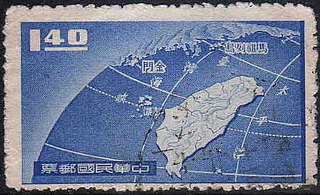 W
WThis is a survey of the postage stamps and postal history of Taiwan, otherwise known as Formosa, and currently governed by the Republic of China.
 W
WPrincess May was a steamship built in 1888 which was operated under a number of different names and owners. The ship is best known for having been involved in a grounding in 1910 which left the ship jutting completely out of the water, which became the subject of a famous shipwreck photograph.
 W
WProject National Glory or Project Guoguang was a military attempt by the Republic of China (ROC) Armed Forces in Taiwan to try to recapture Mainland China held by the People's Liberation Army in the newly established People's Republic of China (PRC). Preparatory operations began in 1961 and the project was abandoned in July 1972.
 W
WThe renaming of the Chiang Kai-shek Memorial Hall in Taipei, Taiwan to National Taiwan Democracy Memorial Hall was announced by President Chen Shui-bian on 15 May 2007. The surrounding plaza was rededicated to democracy as Liberty Square. This move was condemned by the pan-blue media as a political move by the Democratic Progressive Party to denounce the historical heritage of the Republic of China. The site has now been restored back to the original title of the "Chiang Kai-shek Memorial Hall" as of 20 July 2009 with the Nationalists back in power.
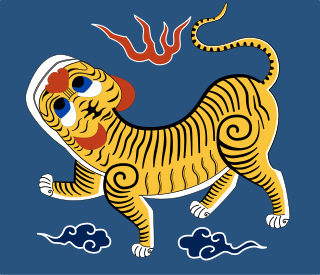 W
WThe Republic of Formosa was a short-lived republic that existed on the island of Taiwan in 1895 between the formal cession of Taiwan by the Qing dynasty of China to the Empire of Japan by the Treaty of Shimonoseki and its being taken over by Japanese troops. The Republic was proclaimed on 23 May 1895 and extinguished on 21 October, when the Republican capital Tainan was taken over by the Japanese. Though sometimes claimed as the first Asian republic to have been proclaimed, it was predated by the Lanfang Republic in Borneo, established in 1777, as well as by the Republic of Ezo in Japan, established in 1869.
 W
WThe retreat of the Republic of China to Taiwan, also known as the Kuomintang's retreat to Taiwan or "The Great Retreat" refers to the exodus of the remnants of the internationally recognized Kuomintang-ruled government of the Republic of China to the island of Taiwan (Formosa) in December 1949 toward the end of active battles in the Chinese Civil War. The Kuomintang, its officers and approximately 2 million troops took part in the retreat; in addition to many civilians and refugees, fleeing the advance of the Communist People's Liberation Army.
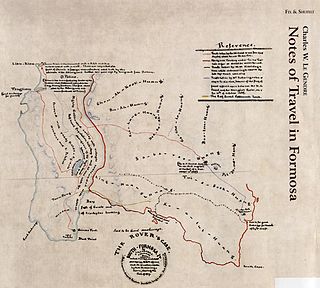 W
WThe Rover Incident occurred on 12 March 1867 when the American merchant ship Rover, captained by Joseph Hunt who was accompanied by his wife Mercy G. Beerman Hunt, and en route from Swatow to Newchwang, was wrecked off the coast of Formosa. The ship struck a coral reef called Chihsingyen near Oluanpi and drifted into the area of Kenting in modern-day Hengchun, Pingtung County, Taiwan. Fourteen American sailors, including Hunt and his wife, were killed by Taiwanese Aborigines in revenge for earlier killings of Kaolut (Koalut/Ku-a-lut/etc) tribe members by foreigners. Subsequently, the U.S. military decided to send a military expedition against the tribe members responsible.
 W
WMona Rudao, or Mouna Rudao was the son of a chief of the Seediq tribe of Taiwanese aborigines. In 1911, he made a visit to Japan. He succeeded his father as a chief of the village of Mahebo and became one of the most influential chiefs of the area of Wushe. Mona Rudao was from the Tgdaya group of the Seediq.
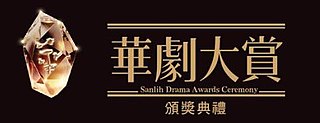 W
WThe Sanlih Drama Awards was an annual awards ceremony that celebrates the best in SETTV drama programming. The awards were created in 2011 to help promote, celebrate and award Sanlih E-Television dramas that aired in the year. The first ceremony was held on 12 December 2012 and was originally called the "Thanks Party" (三立華劇感恩派對). No nomination list was released for the 2012 awards. Winners were announced during the ceremony. The ceremony was held each year in December at SETTV headquarters in Neihu District, Taipei. The last awards ceremony was held in 2016.
 W
WThe sinking of Chian-der 3 was an incident that occurred on 28 May 1986, when the Taiwanese-flagged trawler Chian-der 3 was detected, tracked, fired upon, set on fire and eventually sunk by the Mantilla-class patrol vessel PNA Prefecto Derbes of the Prefectura Naval Argentina, at a location 24 nautical miles outside the United Kingdom's Total Exclusion Zone, which covers a circle of 200 nautical miles from the centre of the Falklands Islands. Two Taiwanese fishermen were killed; four others were injured.
 W
WSi̍t-chûn Movement, inasmuch as the Kyoto School, Neo-Confucianism and other prominent philosophical movements in the early-twentieth-century East Asia, is a significant philosophical movement during the Japanese colonial rule in Taiwan, in which the intellectuals in the 1920s formulated their reflections on the Taiwanese community through the western values and thoughts and wedged against the colonial domination and imperial assimilation. Si̍t-chûn Movement was intensely bond with political and cultural counter-imperialism, involving intellectuals e.g. Lin Mosei(zh:林茂生), Hung Yao-hsün(zh:洪耀勳), Wen Kwei Liao(zh:廖文奎), Mingdian Liu(zh:劉明電), Shao-Hsing Chen(zh:陳紹馨), Lin Qiu-wu(zh:林秋悟), Hsiang-yu Su(zh:蘇薌雨), Shenqie Zhang(zh:張深切), Chin-sui Hwang(zh:黃金穗), Shoki Coe(zh:黃彰輝), Isshū Yō(zh:楊杏庭), C K Wu(吳 振坤), and so forth. ‘At the begin,’ according to the Taiwanese cultural sociologist Ren-yi Liao ’s 1988 grounding formulation, ‘Taiwanese Philosophy has been a civil intellectual movement against domination, rather than an academic form of conception.’ ‘Si̍t-chûn Movement’, however, has yet ratified and systemically studied until 2014.
 W
WThe Taiwan Garrison Command was a secret police/state security body which existed under the Republic of China Armed Forces on Taiwan. The agency was established at the end of World War II, and operated throughout the Cold War. It was disbanded on 1 August 1992.
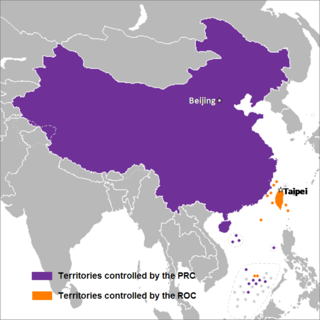 W
W"Taiwan, China", "Taiwan, Province of China", or "Taiwan Province, China" are a set of politically controversial terms that characterize Taiwan and its associated territories as a province or territory of "China". The term "Taiwan, China" (中国台湾) is used by Chinese media whenever Taiwan is referenced, even though the People's Republic of China (PRC) – which is widely recognized by the international community as the legitimate representative of "China" – does not exercise jurisdiction over areas controlled by the Republic of China (ROC).
 W
WUnited Nations Security Council Resolution 87, adopted on 29 September 1950, considering that its duty is to investigate any situation likely to lead to international friction, the Council decided that it would respond to declarations by the People's Republic of China regarding an armed invasion of the island of Taiwan after 15 October 1950 when representatives from both the PRC and the ROC would be present.
 W
WYushō disease was a mass poisoning by polychlorinated biphenyls (PCBs) which occurred in northern Kyūshū, Japan, in 1968. In January 1968, rice bran oil produced by Kanemi Company in Kyushu was contaminated with PCBs and polychlorinated dibenzofurans (PCDFs) during production. For deodorization, the oil was heated using PCB as the heating medium, circulating through pipes. Due to holes in the pipes the PCB leaked into the rice bran oil. The contaminated rice bran oil was then sold to poultry farmers for use as a feed supplement and to consumers for use in cooking. In February to March 1968, farmers started reporting that their poultry were dying due to apparent difficulty in breathing; altogether 400,000 birds died. About 14,000 people who had consumed the contaminated rice oil were affected in Japan. More than 500 died. Common symptoms included dermal and ocular lesions, irregular menstrual cycles and a lowered immune response. Other symptoms included fatigue, headache, cough, and unusual skin sores. Additionally, in children, there were reports of poor cognitive development.